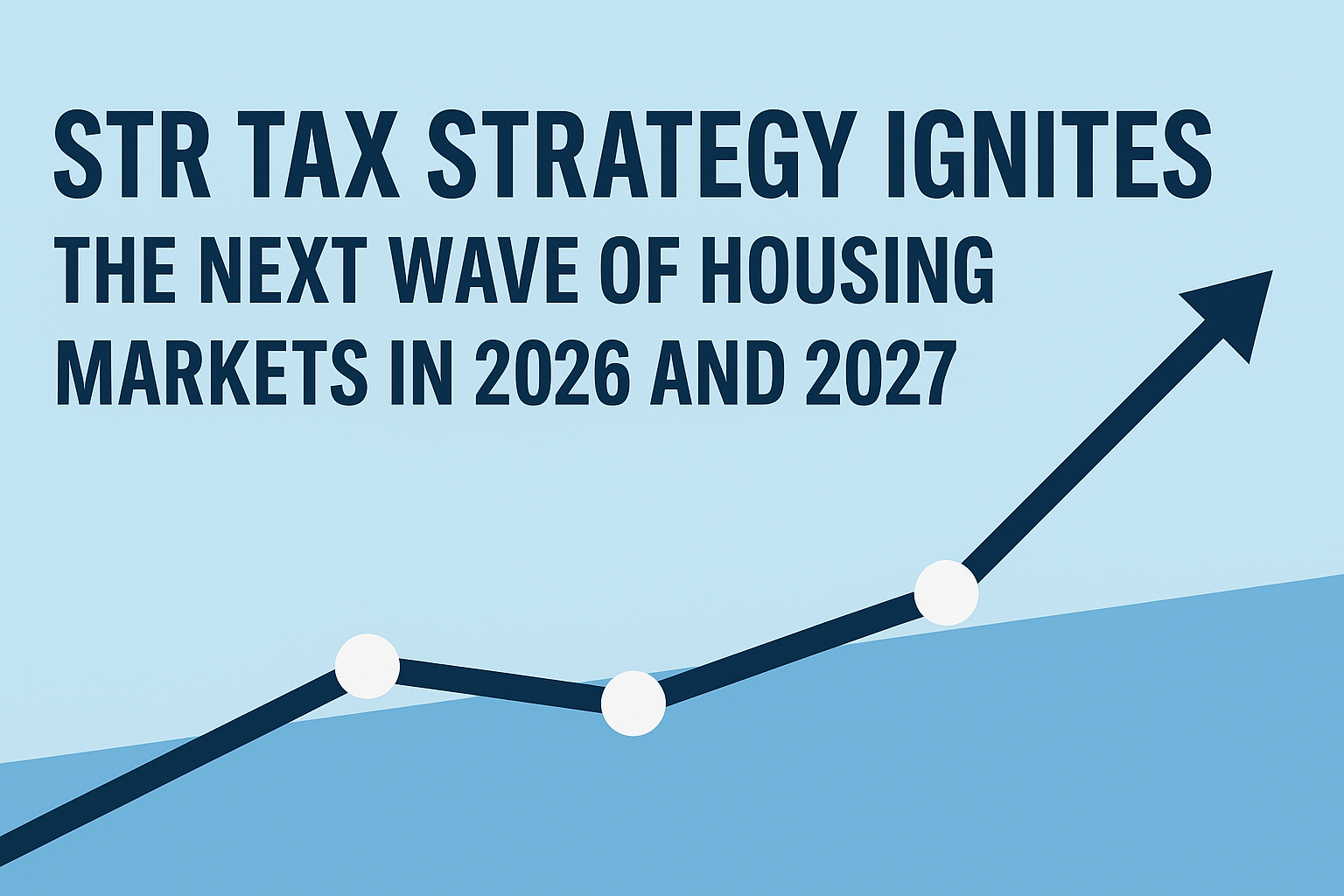STR Tax Strategy Ignites the Next Wave of Housing Markets in 2026 and 2027
In our experience working closely with homeowners and investors, tax driven planning often separates passive participants from those who build long term financial strength. A significant shift is taking place in the short term rental space. The combination of accelerated depreciation rules and favorable loss treatment is setting the stage for meaningful movement in several housing markets over the next two years. This is not a guess or a trend built on hype. It is a direct result of recent legislation that rewards individuals who act with clarity, preparation, and purpose.
Why the STR Opportunity Is Real
The foundation of this opportunity comes from how short term rentals are treated for tax purposes. A property with an average stay of fewer than seven days can be treated as a trade or business if the owner meets the material participation standards. Under these rules, qualifying losses can offset active income rather than being trapped in passive classifications.
For high income individuals, this creates access to a category of tax advantages that traditional long term rentals simply do not offer. When combined with accelerated depreciation, the financial outcome can be very favorable.
Why the Momentum Shift Happened
The surge of interest in this strategy is directly tied to a recent change in federal tax law.
The One Big Beautiful Bill Act passed in July. This legislation allows businesses to write off 100 percent of the purchase price of eligible assets in the first year. These assets include heavy machinery, equipment, cars, jets, and yachts that are legitimately used for business purposes.
This change matters because many individuals structure their short term rentals through a business entity. If the property and related assets qualify as business use, the ability to write off the full cost in year one becomes a powerful incentive. It combines immediate tax relief with an income producing real estate asset, creating a rare alignment of benefits that many people will try to take advantage of before any future policy adjustments.
How the Strategy Works
To fully benefit from this opportunity, several steps must be handled with intention and accuracy.
Acquire a property that qualifies as a short term rental and meets the average stay and participation requirements.
Conduct a cost segregation study so the depreciable components of the property are identified correctly.
Model both the pre tax and after tax return, including the impact on W2 or business income.
Assemble the right professional support, including a CPA who understands STR rules, a lender who works with STR portfolios, and local experts who can guide zoning and compliance decisions.
For individuals in higher income brackets, the ability to use STR losses to offset active income can significantly improve the financial performance of a property. The resulting tax savings can accelerate equity growth far more quickly than traditional rental structures.
Why Housing Markets Will Respond
Because this strategy is both time sensitive and financially appealing, several outcomes are likely to appear in STR friendly markets.
Stronger competition for homes that are ready for STR use.
Reduced supply of properties that meet STR zoning or compliance requirements.
Increased demand in markets with tourism appeal or year round visitor flow.
More multi offer situations for properties that deliver both income potential and accelerated depreciation advantages.
Understanding these trends allows you to move with intention rather than reacting after the opportunity has already been absorbed by the market.
Preparing Now
If you are considering this strategy, it is important to begin with a clear plan.
Confirm that the property is located in an area where STR use is allowed.
Review municipal requirements, registration rules, and potential limitations.
Ensure you can meet material participation standards.
Engage cost segregation professionals early.
Focus on properties with strong revenue potential and high depreciable basis.
Surround yourself with support partners who understand tax planning, STR operations, and local regulatory requirements.
While the tax advantages are significant, success still depends on selecting the right property and understanding the demand profile of the area.
Impact on the Kansas City Region
Although some of the most intense competition may appear in coastal or resort destinations, Kansas City presents its own opportunities. The region attracts visitors for business travel, entertainment events, sports, and growing tourism. Homes located near major attractions, event venues, recreational areas, and high traffic corridors are well positioned to compete as STRs.
Because we work directly with clients throughout Kansas City and the surrounding areas, I can help evaluate which locations offer the combination of visitor demand, zoning compatibility, and long term potential that this strategy requires. I can also help determine whether a property supports both personal enjoyment and revenue generation while still shifting the tax advantages in your favor.
Conclusion
The alignment of the One Big Beautiful Bill Act with existing STR rules represents one of the most significant real estate planning opportunities in recent years. With active loss treatment and restored first year write offs now available under the right conditions, the next two years are expected to bring renewed momentum to STR friendly housing markets.
If you are considering this strategy and want guidance on property selection, zoning, tax requirements, or long term planning, we are here to help. We can walk you through every step and help you build a strategy that matches your goals with the opportunities available today.

